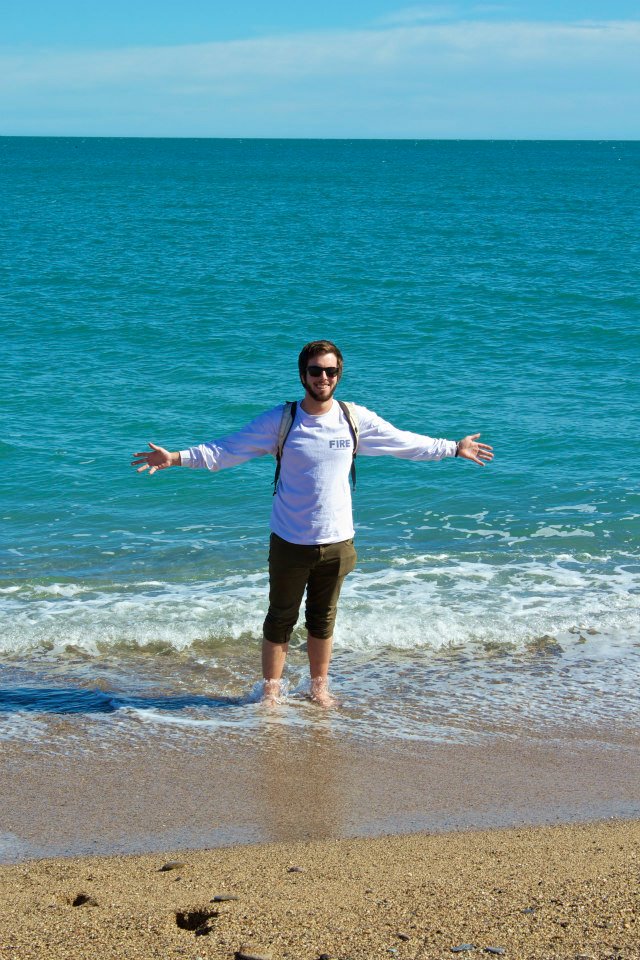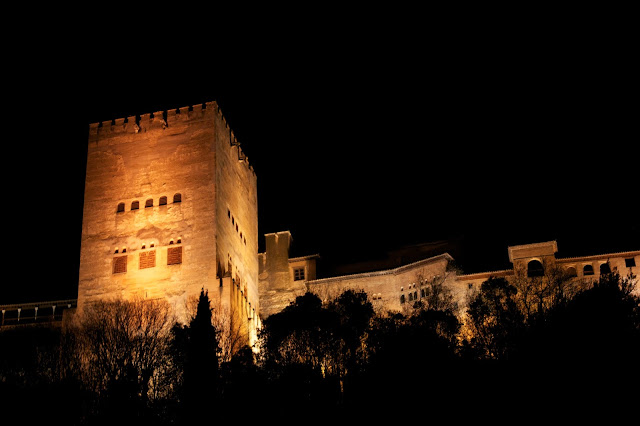
After putting most of our stuff in our lockers, we headed towards the beach


Being a lifeguard in California, I took particular interest in the lifeguards I saw. Turns out the two guards I talked to were Argentians studying in Barcelona. They said they loved their job but the pay ok. The 700 euro a month they were paid would probably be enough to cover rent and food but not much more. Still the idea of lifeguarding in Spain would be a great awesome so Ill definitely keep that on the table.

 |
| photo by Sarah Z. |

 |
| photo by Sarah Z. |
That night we went to the Magic Fountains up on the hill part of Barcelona called Montjuïc. I didn't bring my camera but the experience was amazing. We probably could have stayed there for hours listening to the music and watching the colorful sprays of the fountains dance in the night but we ended up going to a great pub called the London Bar. Evidently this place was a popular hang out for Picasso and Hemingway which made the live music and great cider all the more better. Following the London Bar we went to a club with some people we met on the metro. Unlike Madrid the Barcelona metros were open all night so we were able to stay out late dancing.

The following morning we enjoyed another free breakfast from the hostel before setting for a free tour of Barcelona. The tour focused mainly on Guadi's influence on the city and the guide was very knowledgable about the history. Even though it was his first tour ever we couldn't complain because besides the US Olympic Fencer we met, we were the only people on the tour.

The tour guide gave a very patriotic perspective on the Catalunya ( Catalonia) independence movement in defense of successionist sentiments. He believed that Catalunya ( the semi autonomous region of Spain the Barcelona is apart of) had a history of independence and deserved to be separate. It was interesting to see how confident he was that this was the right decision. He vilified the central Madrid government as being oppressive towards Catalunya, even making a seemingly unrealistic statistic along the lines that, "over the last 30 years Madrid as built 300km of rail line while Barcelona as had 2 km." Regardless of whether this claim was true, I imagine he made up a signifiant opinion of young people in Barcelona.
To support his statements you only needed to look around and notice all the Catalunya flags. Definitely more than any other city Ive been to in Spain. He also explained that the flags had different meanings. The flags with the blue triangle indicated that person wanted Catalunya to be an independent country. Depending on the color of the star could mean different things as well. The red star meant an independent socialist country while the white meant just independent. The traditional flag of the Catalunya region is the Senyera. Evidently one of the oldest flags in Europe its said that in the 9th century following the defeat of a Moor siege of Barcelona, one of the heroes was allowed to make the flag. Being wounded he dragged his blood soaked hand along a yellow of coat of arms making the yellow flag with red stripes used by cities of the region. Regardless of how you felt about that independence movement you could not help but feel a sense of pride the people of Barcelona felt towards their city and culture.

Casa Batlló was a very Dr. Sues like house designed to appease the growing middle classes desire to be more sophisticated. Using nature for inspiration Gaudi designed this building to compete with other architects who were all trying to escape traditional design and consequently forming the modernist art form. These two buildings and another down the street were all built within ten years of each other by separate architects trying to outdo each other.
Casa Millá was another Gaudi piece and was critized by contempary people for its strange design. Both Batllo and Milla have amazing interior and rooftop pieces however we did not have time to see them. I plan on going back to Barcelona later in the month and hopefully then I can pay for a proper tour to appreciate the inside.
The house was designed by another one of Gaudi rivals. It was made for three sisters by their mother; who wanted them all to live together even though they hated one another. The design gives three equal sections and towers.


The Arc de Triomf led to a really neat park that had lots of families hanging out enjoying the sun.

We found a farmers market along the harbor path, where local business were selling cheeses, honey, candies, meats, and toys

Next time: Park Guëll


































 Near my hostel, I found the roads blocked because of a demonstration against budget cuts.
Near my hostel, I found the roads blocked because of a demonstration against budget cuts.










